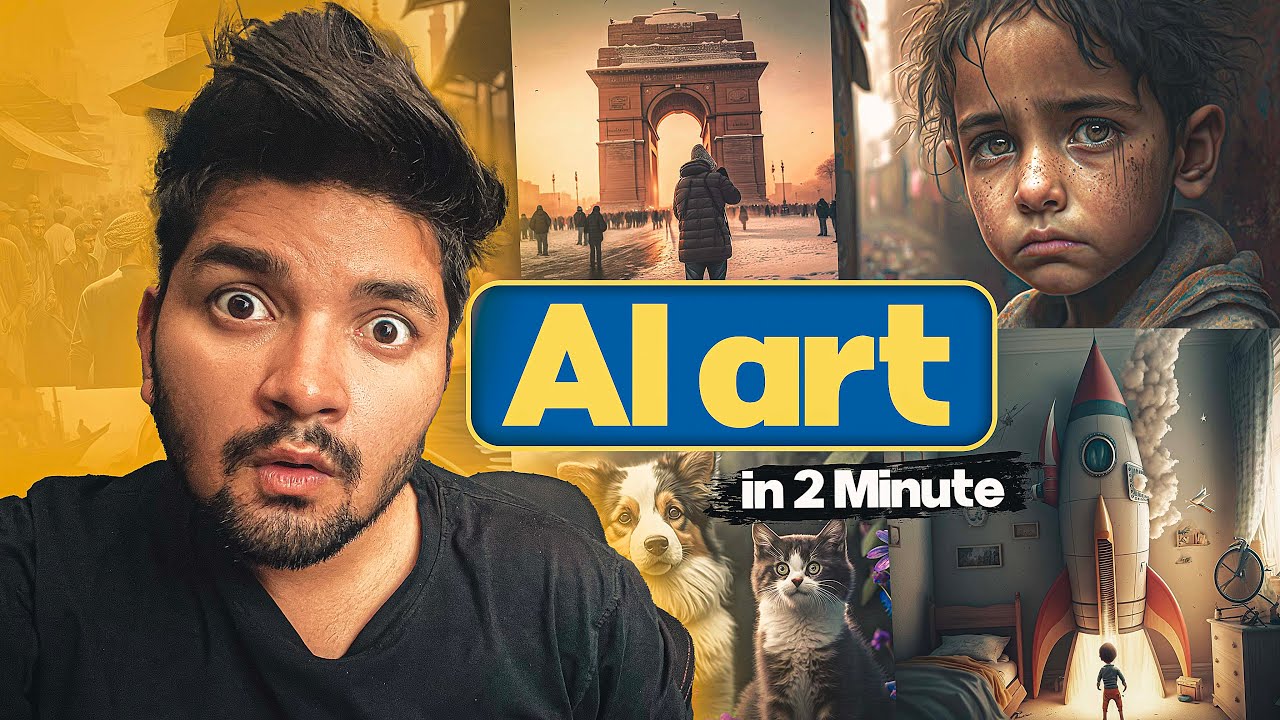Create Counter-Strike in UE4
Summary
TLDRIn this video, Victor Airman walks viewers through the process of recreating the iconic Counter-Strike map, Dust2, with a hyper-realistic twist using cutting-edge technologies. He demonstrates techniques like photogrammetry, asset importation through Quixel Bridge, and the creation of realistic textures and trim sheets. From modeling basic structures to applying realistic materials and set dressing, Victor shows how various assets were used to create a detailed environment that feels alive. Viewers are also invited to join a livestream for a deeper dive into the project's creation process.
Takeaways
- 😀 Victor Airman introduces a breakdown of recreating Counter-Strike's iconic Dust2 map with a hyper-realistic twist using cutting-edge technology.
- 😀 The process started with playing the original game, capturing screenshots, and using photogrammetry software to create a 3D scan for reference.
- 😀 Basic shapes and structures of the map were modeled, staying true to the original, and exported into Unreal Engine for further development.
- 😀 Plaster material was applied using real-world scan data from the Megascans library to achieve realistic textures in Unreal Engine.
- 😀 A fun and efficient method called Quick Sabre was used to export assets to Unreal Engine with just one click, saving time on imports.
- 😀 Wood planks were placed and varied to avoid repetition, with a worn door frame added for more realism.
- 😀 Trim sheets were created to add extra details such as crowning and panels, helping to enhance the realism of specific parts of the model.
- 😀 Vertex painting was employed on the road to break up repetitive asphalt textures and make it look more natural and varied.
- 😀 3D assets like barrels, concrete barriers, and cables were added to populate the scene, with realism achieved by using realistic assets from Megascans.
- 😀 Throughout the scene, advanced techniques like decals, wind animation for foliage, and post-processing were used to bring the Dust2 map to life, making it fully playable on modern computers.
Q & A
What was the main goal of recreating the Dust2 map with a hyper-realistic twist?
-The main goal was to explore how one of the world's most popular games, Counter-Strike, could look if remade using the most cutting-edge technologies available today, adding hyper-realistic details and advanced workflows.
What role did photogrammetry play in the project?
-Photogrammetry helped the creator capture a variety of screenshots from different angles in the game, which were then fed into software to create a simple 3D scan. This process provided valuable reference material for understanding the scale and proportions of the map.
How did the creator ensure the proportions of the map were accurate?
-By capturing multiple screenshots from different angles in the game and using photogrammetry software to generate a 3D scan, the creator was able to accurately assess the proportions and scale before moving forward with modeling.
What is Quixel Bridge, and how was it used in this project?
-Quixel Bridge is a tool that simplifies the process of importing assets from the Quixel Megascans library into Unreal Engine. In this project, it was used to quickly import various materials and 3D assets like plaster, wood, and foliage with minimal effort, speeding up the workflow.
What are trim sheets, and how were they used in the scene?
-Trim sheets are tileable textures applied to models to add detailed features like crowning, panels, and damage. In this project, trim sheets were created for elements like corners and edges, making the structures look more realistic and detailed.
What is the significance of vertex painting in this project?
-Vertex painting allowed the creator to paint different variations of asphalt directly onto the road meshes. This technique helped break up repetitive textures, making the road look more natural and varied.
How were foliage and small props like stones used to enhance realism?
-Foliage and small props like pebbles were scattered throughout the scene using Unreal Engine’s vertex painting tools. These elements added subtle irregularities to the environment, enhancing realism and making the road and surrounding areas appear more lived-in and dynamic.
What is the purpose of using a 'live link' in this workflow?
-The live link feature allowed the creator to seamlessly transfer assets and changes between Quixel Bridge and Unreal Engine in real-time. This streamlined the process of importing, adjusting, and applying assets without needing to manually export or reimport them.
How did the creator manage to avoid repetition in the scene, especially in the road textures?
-The creator used a combination of vertex painting, random rotation and scaling of meshes, and variation in asset choices to ensure there was no visible repetition in textures or details, especially in the road area.
What is the significance of the livestream on the 12th, and what can viewers expect?
-The livestream will provide an in-depth walkthrough of the techniques used in the project. The creator will answer questions, explain advanced workflows, and cover the creation of specific assets, including trim sheets, materials, and mesh design.
Outlines

This section is available to paid users only. Please upgrade to access this part.
Upgrade NowMindmap

This section is available to paid users only. Please upgrade to access this part.
Upgrade NowKeywords

This section is available to paid users only. Please upgrade to access this part.
Upgrade NowHighlights

This section is available to paid users only. Please upgrade to access this part.
Upgrade NowTranscripts

This section is available to paid users only. Please upgrade to access this part.
Upgrade NowBrowse More Related Video
5.0 / 5 (0 votes)





